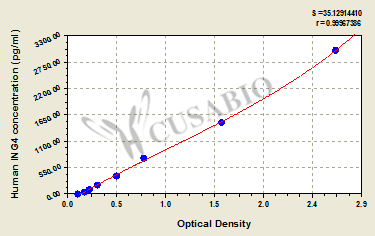This human ING4 ELISA kit employs the quantitative sandwich enzyme immunoassay technique to measure the levels of human ING4 in multiple samples, including serum, plasma, cell lysates, or tissue homogenates. It also uses the enzyme-substrate chromogenic reaction to visualize and analyze the analyte levels through the color intensity. The intensity of the colored product is in direct proportion to the ING4 levels in the sample and is measured at 450 nm through a microplate reader.
ING4 has been identified as a tumor suppressor since it plays a critical role in the regulation of chromatin modification, cell proliferation, angiogenesis, and cell migration. It is frequently down-regulated in various human cancers. Decreased expression or dysregulation of ING4 is widely seen in diverse types of cancers. Ample studies have shown that ING4 is responsible for important cancer hallmarks such as pathologic cell cycle arrest, apoptosis, autophagy, contact inhibition, and hypoxic adaptation, and also affects tumor angiogenesis, invasion, and metastasis.






